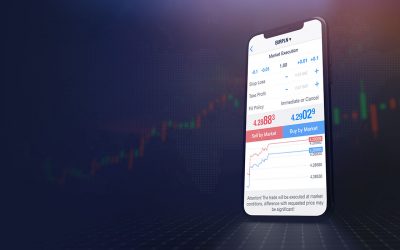
Article content
Which type of oil to choose?
Brent Crude and West Texas Intermediate (WTI) are two of the most common types of crude oil used in global trade. When choosing between them, consider the following factors:
Origin
- Brent is extracted mainly in the North Sea, particularly around the Brent and Forties oil fields. It comes from the UK, Norway, and other countries in Northern Europe.
- WTI is produced in the West Texas region and the northern part of the Gulf of Mexico, in the US.
Quality
- Brent typically has a lower density and lower sulfur content compared to WTI, making it suitable for gasoline and diesel fuel production.
- WTI has a higher density, making it suitable for lubricating oils manufacturing.
Price and Volatility
- Brent’s price is often higher than WTI’s due to geopolitical factors and demand in global markets.
- WTI prices are usually less volatile and depend on economic and political conditions in the United States.
Geographical Distribution
- Brent is widely used in Europe, Asia, and other parts of the world, excluding North America.
- WTI is popular in North America, especially in the US.
Trading Platforms
- Brent is commonly traded on the ICE (Intercontinental Exchange) in London.
- WTI is primarily traded on the NYMEX (New York Mercantile Exchange) in New York.
Traders should consider price differences, regional market demand, geopolitical events, and their trading strategies when choosing between Brent and WTI.

Factors Affecting Oil Prices
Oil prices are influenced by various factors that can change over time:
- Supply and Demand. This is the primary factor. The level of oil demand, especially from major consumers, and the supply of oil, including production and export, significantly impact the price.
- Geopolitical Events. Conflicts, wars, sanctions, and political instability can lead to significant price changes due to potential supply disruptions.
- Currency Exchange Rates. Changes in exchange rates can affect oil prices, as oil is traded in US dollars. Strengthening or weakening of the dollar can change oil costs for foreign buyers.
- Oil Reserves. The level of oil reserves in the market influences its cost. An increase in reserves lowers prices, while a deficit raises them.
- Technological Innovations. New technologies in oil extraction and processing affect the balance of supply and demand, as well as prices.
- Macroeconomic Factors. Economic indicators such as inflation, unemployment, and GDP growth impact oil consumption levels and, consequently, prices.
- Policy and Regulation. Decisions made by governments and international organizations, including agreements to reduce production (e.g., OPEC+ deal on output cuts), influence oil prices.
- Weather Conditions. Extreme weather events like hurricanes or extended cold periods can lead to disruptions in oil extraction and transportation, raising prices.

Oil Trading Strategies
Experienced traders employ various strategies for effective oil trading. Choosing the right strategy that considers your goals, trading style, and current market conditions is key to success.
- Fundamental Analysis. Fundamental analysis is an integral part of oil trading and includes studying economic, political, and other important events that can affect oil supply and demand. This involves analyzing various data such as oil reserves, production indicators, political events, and economic indicators. Understanding these factors helps traders make informed decisions and build strategies based on fundamental data. For example, if the US oil inventory report shows an increase in reserves, it might indicate that supply exceeds demand, which could lead to a decrease in oil prices.
- Technical Analysis. Technical analysis is an effective method for predicting future prices based on historical market data analysis. Traders use various indicators and chart patterns to identify trends and potential entry and exit points. For example, a trader might use indicators like moving averages to determine the trend, and support and resistance levels to identify potential entry or exit points in a trade.
- Swing Trading. This strategy is suitable for those who prefer to hold positions for several days to several weeks, trying to profit from more significant market fluctuations. Swing traders often use a combination of fundamental and technical analysis to make trading decisions.
- News-Based Strategy. This strategy is based on the price reaction to news events. Oil prices often respond to news about geopolitics, economic data, and other events. For example, in the event of a major geopolitical conflict in an oil-exporting country, a trader might expect an increase in oil prices and open a long position.
- Hedging Strategy. Hedging is an effective strategy used to reduce the risk of losses from unfavorable price changes. Suppose a trader has a long position in oil and wants to protect against a potential price decrease. The trader can open a short position in oil futures contracts to offset potential losses from a price drop. If the oil price falls, the losses are compensated by profits from the short position in futures.
- Using Derivatives. Contracts for Difference (CFDs) and oil futures allow traders to profit from both the rise and fall of oil prices without owning the physical asset. This adds flexibility to trading strategies.
- Seasonality in Oil Trading. Certain times of the year can affect oil prices. For example, in summer, when demand for gasoline increases due to car trips, oil prices may rise.
- Tech Tools. The development of technologies such as artificial intelligence and algorithmic trading opens new possibilities for market analysis and decision-making in trades.

Risk Management in Oil Trading
First, you need to determine your willingness to take risks on each trade. You should risk no more than 2% of your capital on a single trade. This helps limit potential losses and protects your capital from a series of losing trades.
Another risk management tool is the stop-loss order. A stop-loss order is placed by a trader and gets triggered automatically once the asset reaches the predetermined price point, limiting potential losses.
Moreover, it’s important to always monitor the size of your positions. Trading a larger number of contracts can increase potential profits but also the level of risk. Ensure that the size of your position matches your risk level.
Oil Trading is not only market analysis and strategies but also continuous self-education and development. Success in trading requires time, patience, and perseverance, as well as readiness to adapt to rapidly changing market conditions. It’s important to approach oil trading with realistic expectations and strive for continuous self-improvement and learning.
Recommended reading:






